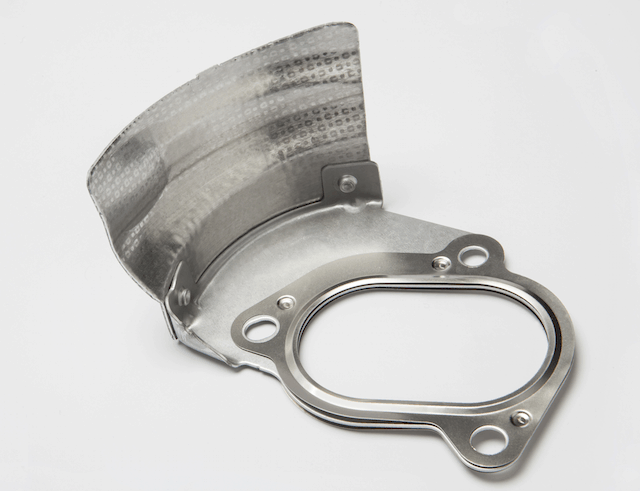Typically, the gaskets used to seal turbocharger outlet flanges are composed of three layers: A central ‘distance layer’ made from steel, which is aluminium-coated to reflect heat, sandwiched between two sheets of stainless steel.
When the three plies are welded together the dissimilar materials can react, creating bubbles on the surface of the gasket, which compromise the sealing.
The fundamental concept that Federal-Mogul has developed is elegantly simple. It stamps a series of holes in the middle layer and a corresponding set of dimples on the outer layers. The stainless steel outer layers are spot welded together where the opposing dimples meet within the holes, leaving the intermediate aluminium/steel layer untouched.
A standard spot welding technique is used to join the two layers, but putting this theory into practice isn’t quite as simple as it sounds.
“The biggest challenge was to identify the tolerances of the dimples that we have to press into the functional layers,” said Thorsten Schäfer, global engineering manager for rigid heat shields at Federal-Mogul Powertrain. “You have to bear in mind we’re talking about a gasket that will not tolerate any embossments or irregularities that protrude above the surface. The distance layer has a certain thickness – typically 1 mm or 0.8 mm – and the dimples have to be toleranced in very carefully to make sure that you don’t get any high points.”

Federal-Mogul has already applied the technique to turbocharger gaskets in high-volume production, but it is looking into other potential applications.
“Wherever you have an opportunity to use a hybrid gasket/heat shield with aluminium or zinc-coated materials this becomes a factor. You can’t use rivets because that would build the height up too much, so you have to use welding,” said Schäfer. “All those applications can be manufactured this way.”




Nanogenerator consumes CO2 to generate electricity
Whoopee, they've solved how to keep a light on but not a lot else.